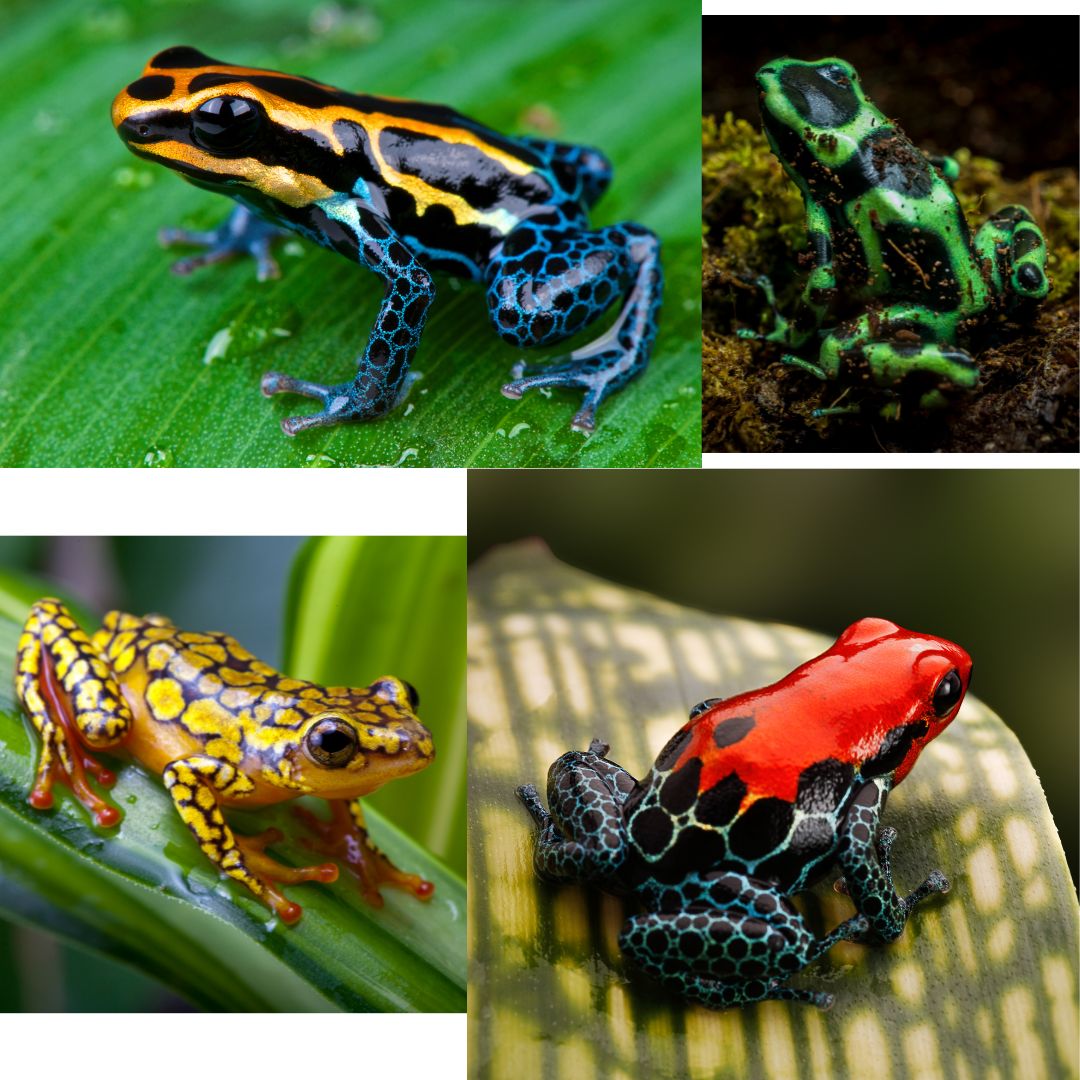Deadly Beauty: Poison Dart Frogs
24th Apr 2025
The Vibrant World of Poison Dart Frogs: Small, Colorful, and Seriously Cool
Deep in the heart of the tropical rainforests, nestled among dripping leaves and mossy logs, lives a tiny creature with a serious attitude—the Poison Dart Frog. Don’t let its petite size or rainbow-bright colors fool you—this amphibian is a chemical powerhouse, a warning sign on legs, and a fascinating marvel of nature.
What’s in a Name?
The name “Poison Dart Frog” comes from a deadly tradition. Indigenous people of Central and South America used these frogs' potent toxins to coat the tips of blow darts for hunting. Not all dart frogs are poisonous, but the ones that are… you definitely wouldn’t want to lick one. (Seriously, don’t.)
The deadliest of them all? Phyllobates terribilis, or the golden poison frog—just one has enough toxin to kill 10 grown men. Luckily, in captivity, without their natural toxic diet, these frogs are harmless.
Colors That Shout "Stay Back!"
Nature’s warning signs are on full display here. Poison dart frogs come in neon blues, electric yellows, fiery reds, and everything in between. These aposematic colors are evolution’s way of saying, “Back off, I’m dangerous.” Predators that ignore the message usually regret it.
Interestingly, each species has a different pattern and color combo, making them one of the most visually stunning groups in the amphibian world.
Diet: The Secret Behind the Poison
So, how do they get their toxins? It’s all about the diet. In the wild, dart frogs munch on ants, termites, and other tiny invertebrates that contain alkaloid toxins. The frogs store these chemicals in their skin, turning themselves into little bio-weapons. In captivity, where their diet is toxin-free, they lose their dangerous edge.
Tiny But Tough
These frogs are usually only about 1 to 2 inches long, but their presence in the ecosystem is mighty. They help control insect populations, serve as prey for toxin-resistant predators, and even contribute to medical research. Some of their skin toxins are being studied for potential use in painkillers and heart medications.
Conservation: Fragile Jewels of the Forest
Sadly, these vibrant frogs are in trouble. Habitat loss, pollution, climate change, and the illegal pet trade are taking a toll. Many species are now endangered or critically endangered. Protecting their habitats is essential not just for the frogs, but for the rich biodiversity of the rainforest.
Final Leap
Poison dart frogs are a perfect example of how something small can be powerful, beautiful, and important all at once. They remind us that even the tiniest creatures deserve our attention—and our protection.




